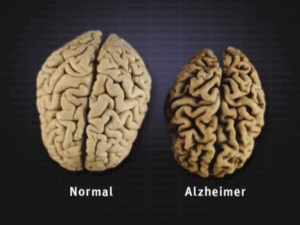But at what cost?
Blockchain, a record of transactions on an online network known as a computational decentralized ledger, is a relatively new method of storing finances and data. It is completely online, always available, and known for its strong security; once the user inputs information, it is irreversible and cannot be altered (2). Blockchain’s efficient approach has expanded its popularity, and it has been used by major companies such as Walmart, Pfizer, the American International Group, Siemens, and Unilever (2). So what is this novel financial technology and how does it work?
Blockchain was first introduced in 1991 by scientists who wanted a method to timestamp digital documents so they could not be tampered with. The first real-world application for blockchain took place in 2009 when Bitcoin, a cryptocurrency used for encrypted and peer-to-peer transactions, started using the technology (2). Blockchain facilitates Bitcoin exchanges by recording every transaction that occurs (6). Cryptocurrencies like Bitcoin are not the only use for blockchain technology, however; other potential applications include managing supply chains, employee travel, and access to capital and other resources (3). Nearly any function that relies on ledgers, which are a collection of financial accounts, can benefit from blockchain technology, and the possibilities for its use are limitless.
Blockchain works by creating “blocks,” which are records of events or financial transactions, and duplicating them across the ledgers for all participants in the transaction. Each block contains a record holding the information or receipt of the individual transaction, and each record is connected in a “chain” based chronologically (2). Once information is entered as a block, it cannot be altered. Additionally, duplicating the blocks for each step of the chained digital ledger eliminates potential errors or tampering by any participant (2). This increases efficiency and trust in the transactions for which blockchain is used.
(3)
Despite its benefits, blockchain technology has its drawbacks. The process of verifying and creating new blocks on the blockchain is known as “mining”, and mining relies on complex mathematical algorithms and computing equipment (1). This equipment also produces significant greenhouse gas emissions. For example, each Bitcoin transaction using blockchain technology is estimated to produce emissions equivalent to driving a gasoline-powered car between 1,600 and 2,600 kilometers (4). This highlights the high environmental cost of blockchain mining and the need to reduce its impact. Efforts are underway to shift blockchain technology towards alternative energy sources like solar, wind, geothermal, or hydropower. Blockchain companies can also participate in carbon offset initiatives, where they support efforts to reduce carbon emissions elsewhere and aim to offset their own carbon footprint. Because blockchain technology is so new, its climate impact is still an evolving issue that needs to be addressed.
Blockchain is an exciting innovation and offers possibilities for companies and consumers, but it comes with a hefty price to the environment. Like all new technologies, it must evolve and adapt to the needs of the communities it serves. Hopefully, with increased innovation and regulatory oversight, blockchain’s environmental challenges can be mitigated.
References
- Clarke, A. (2023, May 30). [The Environmental Impact of Blockchain Technology]. Nasdaq. Retrieved January 20, 2025, from https://www.nasdaq.com/articles/the-environmental-impact-of-blockchain-technology
- Hayes, A. (2024, September 16). Blockchain Facts: What Is It, How It Works, and How It Can Be Used. Investopedia. Retrieved January 20, 2025, from https://www.investopedia.com/terms/b/blockchain.asp
- Making sense of bitcoin, cryptocurrency and blockchain. (n.d.). PWC. Retrieved January 20, 2025, from https://www.pwc.com/us/en/industries/financial-services/fintech/bitcoin-blockchain-cryptocurrency.html
- Onat, N. C., & Kucukvar, M. (2024, November 8). The large environmental consequences of bitcoin mining. LSE. Retrieved January 20, 2025, from https://blogs.lse.ac.uk/businessreview/2024/11/08/the-large-environmental-consequences-of-bitcoin-mining/#:~:text=Each%20bitcoin%20transaction%20generates%20carbon,to%20reduce%20this%20impact%E2%80%8B
- Srinath Perera. (2020). Consortium blockchain. Science Direct. Retrieved January 20, 2025, from https://www.sciencedirect.com/topics/computer-science/consortium-blockchain#:~:text=A%20consortium%20blockchain%20is%20a,different%20participants%20within%20the%20network
- What is Bitcoin? (n.d.). Coinbase. Retrieved January 20, 2025, from https://www.coinbase.com/learn/crypto-basics/what-is-bitcoin
- What is blockchain? (n.d.). IBM. Retrieved January 20, 2025, from https://www.ibm.com/think/topics/blockchain#:~:text=Blockchain%20is%20a%20shared%2C%20immutable,patents%2C%20copyrights%2C%20branding











Comments are closed.